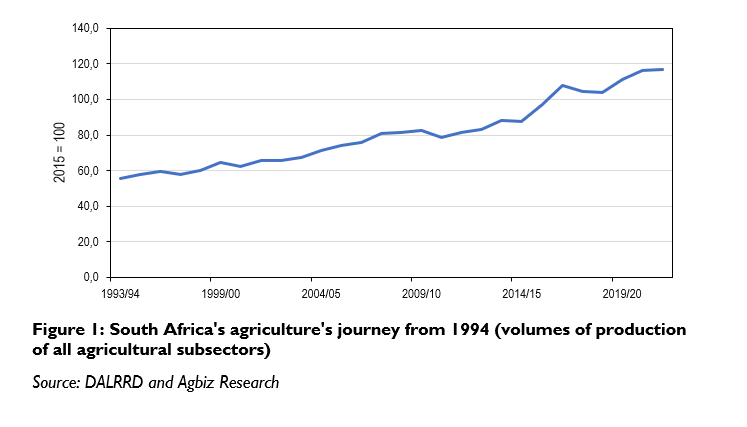

South Africa’s 2023-24 winter crop season has turned out better than some expected.
In its fifth production estimate for the 2023-24 season, the Crop Estimates Committee (CEC), in its data released at the end of December 2023, kept the wheat harvest estimate unchanged from the previous month, at 2.15 million tonnes. This is 2% up from the last season’s crop. The only concern some producers had was the crop quality following heavy rains earlier in the season. We have not heard many complaints so far.
Broadly, the provinces behind the current robust national wheat harvest forecast are the Western Cape (53% of the overall harvest), Northern Cape, Free State and Limpopo. Admittedly, while the Northern Cape and Free State are still among the leading wheat producers, their expected harvest is less than the 2022-23 season.
The expected large harvest in the Western Cape and Limpopo overshadows the decline in harvest in other provinces. There are also likely decent wheat harvests in KwaZulu-Natal, Eastern Cape and North West regions.
The harvest of this crop is nearly complete. Farmers had delivered 1.7 million tonnes of wheat to the commercial silos in the first week of January 2024. The rest of the deliveries will follow in the coming weeks.

The expected winter wheat crop of 2.15 million tonnes is well above the 10-year average harvest of 1.80 million tonnes. If there are no significant changes in the crop forecast in the coming months, South Africa will probably need to import about 1.60 million tonnes to meet domestic consumption in the 2023-24 season (down from the forecast of 1.68 million tonnes).
The deliveries of other winter crops are also nearly complete.
The 2023-24 canola crop was unchanged from November estimates and is at a record 237 450 tonnes (up 13% year-on-year). The annual increase is also a result of increased plantings and expected better yields.
Regarding barley and oats, however, the CEC also kept its harvest forecast unchanged from last month at 360 220 tonnes and 36 200 tonnes, respectively. The recent floods damaged these crops more than wheat and canola. Notably, barley has problems with its quality as a result of the floods earlier in the season.
In sum, while the overall crop size is encouraging, and no major wheat quality issues have been reported so far, this remains a significant concern to us and would influence the import requirements for the season we currently have at a consecutive estimate of 1.60 million tonnes.
The quality challenges in barley will also present significant financial pressure on farmers, which is worth monitoring, particularly from agribusinesses and financial institutions that have clients in the barley production regions.
Overall, the South African winter crop season has turned out better from a volume perspective than some may have feared days after the Western Cape floods last year.
Wandile Sihlobo is chief economist at the Agricultural Business Chamber of SA and author of A Country of Two Agricultures.
Despite flooding, the 2023-24 wheat crop quality is good and the quantity is up from the previous season, while canola is up 13%. But oats and barley are faring less well because of heavy rains




